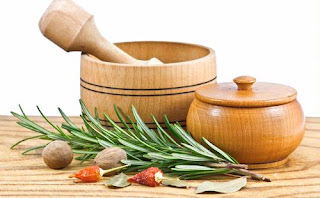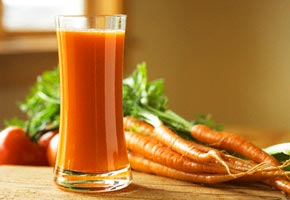
If not addressed, inflammation of the liver which is popular with the name of hepatitis can cause death. Hepatitis is an inflammatory process in liver tissue. The disease is more commonly known as liver disease or jaundice. However, the term jaundice can lead to confusion because not all jaundice caused by inflammation of the liver.
Of the many factors, the virus that was ranked first as the cause of most disease hepatitis. Others may be caused by bacteria, parasites, drugs, chemicals that damage the liver, alcohol, worms, or too poor nutrition.
By DR. Dr. Julitasari Sundoro, based on the course of the disease, hepatitis can be divided into acute and chronic. Called chronic hepatitis is still there after six months. There are five types of viral hepatitis, namely hepatitis A (VHA), hepatitis B virus (HBV), hepatitis C virus (HCV or non-A non-B parenteral), viral hepatitis D (VHD), and viral hepatitis E ( vhe or non-A non-B enteric). In addition to some virus, now there's even a virus that causes hepatitis AE F and G.
Prof. H. Ali Suleiman, Professor of Medicine Faculty of medicine, says that people with hepatitis who have been in the prodormal phase (before the body becomes yellow), usually experience symptoms of weakness, tired, lethargic, no appetite, nausea, vomiting, feeling uncomfortable and pain in the abdomen, fever and sometimes chills, headache, pain in the joints, stiffness in the whole body, especially hips and shoulders, and diarrhea. Sometimes people like to colds and cough with or without sore throat.
When you have reached the phase of yellow (jaundice), the patient will see a yellow urine is concentrated, such as tea. In addition, the whites of the eye ball, the mucous membrane of the palate, and skin turned yellowish. And when there are barriers to the flow of bile into the intestine, feces will pale as putty (stool acholis).
Symptomatically
However, not all hepatitis have symptoms, as already mentioned. There are people with hepatitis with no symptoms at all or maybe only with mild symptoms, and there are really serious in a short time later terminated death.
If so, we must be careful. Besides always used to lead a healthy lifestyle, do regular checks to the doctor. If it was known to suffer from liver disease, usually the doctor will give medicine.
Treatment by doctors, according to Dr. Setiawan Dalimartha, generally symptomatic, ie, to relieve symptoms of diseases that arise other than as a therapy that helps the continuity of liver function.
The drugs are generally hepatoprotector (protects liver cells against the effects of toxic substances that can damage the repair and regeneration), lipotropik (increasing mobility of fat in the liver), Kholeretik (increasing the production of bile by the liver), and kholagogum (improves gallbladder emptying and running it into the duodenum).
Medicinal plant materials to assist in the improvement of liver function is usually hepatoprotective. Materials that include curcumin can be obtained from ginger and turmeric, filantin from meniran, silymarin from widuran, aukubin of leaf spoon, glycyrrhisic acid from the saga, essential oils of garlic, krisofanol of rhubarb, gingerol from ginger, wedelolakton of urang -aring, andrographolide from bitter, and sianidol of tannic substances.
Some Examples Potion
Many medicinal herbs recipes, one from Dr. Setiawan Dalimartha, useful for improving liver function. Some of them are presented because the materials are easily obtainable. However, patients should still consult your doctor when using these recipes:
Remedy 1
Material
- One finger sticks brotowali
- Three glasses of water
- One tablespoon honey
How to Make
Wash brotowali stem and cut into pieces as needed. Boil three cups of water until the remaining one cup. Once cool, strain and add a spoonful of honey. Drink twice a day, each half a glass.
Potion 2
Material
- 9-15 grams of dried stem bugenfil
- Three glasses of water
- One tablespoon honey
How to Make
After cleaning, cut the stems thinly bugenfil. Enter your email in a pan while plus three glasses of water. Boil until the water remains one glasses. Once cool, strain. Drink filtered water after the added honey. Water filter is taken twice a day, morning and afternoon, each half a glass.
Potion 3
Material
- A handful of fresh leaves of bitter melon
- One cup of boiled water
- Salt to taste
How to Make
Wash bitter melon leaves and rinse with boiled water. Beat until smooth leaves with a plus one cup water. Stir until evenly distributed and add a little salt. Strain the herbs and drink in the morning before eating.
Note: This recipe should not be used when being pregnant because it can cause miscarriage.
Remedy 4
Material
- Two ripe tomatoes
- Sugar to taste
How to Make
After being washed, cut-cut tomatoes to be juice. However, if they do not have the tool, the fruit can be boiled with water to taste. After boiling, pulverized or milled, then squeezed. Add the juice of sugar a little bit and then taken twice a day.
Potion 5
Material
- Three or a handful of ripe noni fruit noni skin
- A piece of banana leaf
- A piece of cloth
- Vinegar to taste
The way I
Noni fruit are washed and rinsed with boiled water. Grate and peraslah with a piece of cloth. Juice drink.
How II
For external use, noni skin finely ground and then mixed with a little vinegar. Wrap the mixture with banana leaf. Heat briefly over a fire or steamed. In the circumstances, warm, attach the packing in the upper right abdomen, where the liver is swollen and sore.
Remedy 6
Material
- One tablespoon papaya seeds
- Three fingers mengkal papaya fruit
- Honey to taste
How to Make
Papaya seeds and blend until smooth or mashed seeds while the fruit is grated. The dough will serve as an added honey to taste, then drink.
Note: Pregnant women are forbidden to drink this concoction because it can cause miscarriage.
Potion 7
Material
- Fresh carrot taste
How to Make
Carrots cleaned and washed with boiled water. Trim as needed and make into juice. Can also be shredded carrots and the results are squeezed, and then filtered to collect up to one glass. Carrot juice can be drunk directly.
Note: Most eating carrots can cause skin color to yellow. When that happens, stop drinking potions for a while. Skin color will return to normal.
Remedy 8
Material
- Two fingers of fresh ginger rhizome
- Honey to taste
How to Make
Peeled ginger rhizome, and then washed clean. Rinse with water boiled and then shredded. Add half a cup of warm water and a tablespoon of honey. Stir evenly then squeeze and strain. Drink filtered water a day two times a day.
Potion 9
Material
- One finger turmeric
- One tablespoon honey
How to Make
Turmeric rhizome is washed and shredded. Add a little water on the grater. Grater then filtered and add honey. Drink three times a day.









 6. Layer your clothing when going out in cold. Cold weather dries your skin out faster than when it's warm.
6. Layer your clothing when going out in cold. Cold weather dries your skin out faster than when it's warm.



 It is also believed to have cancer-curing properties. A carrot and milk juice is the ideal vitamin A source for infants and can in no case lead 10 the risk of the child having too much A.
It is also believed to have cancer-curing properties. A carrot and milk juice is the ideal vitamin A source for infants and can in no case lead 10 the risk of the child having too much A.
 If not addressed, inflammation of the liver which is popular with the name of hepatitis can cause death. Hepatitis is an inflammatory process in liver tissue. The disease is more commonly known as liver disease or jaundice. However, the term jaundice can lead to confusion because not all jaundice caused by inflammation of the liver.
If not addressed, inflammation of the liver which is popular with the name of hepatitis can cause death. Hepatitis is an inflammatory process in liver tissue. The disease is more commonly known as liver disease or jaundice. However, the term jaundice can lead to confusion because not all jaundice caused by inflammation of the liver. Ant nests with Myrmecodia pendans scientific name, which comes from iron wood parasite has many benefits for human health. These ants nest serves as a remedy various diseases, of the stamina enhancer, until the cancer is said there is no cure.
Ant nests with Myrmecodia pendans scientific name, which comes from iron wood parasite has many benefits for human health. These ants nest serves as a remedy various diseases, of the stamina enhancer, until the cancer is said there is no cure. Acute kidney failure occurs when the kidneys lose their ability to quickly dispose of waste products from blood. If untreated, this condition can be fatal. Unfortunately, the disease is often asymptomatic. Usually the new doctor asked if a blood or urine is suspected kidney failure.
Acute kidney failure occurs when the kidneys lose their ability to quickly dispose of waste products from blood. If untreated, this condition can be fatal. Unfortunately, the disease is often asymptomatic. Usually the new doctor asked if a blood or urine is suspected kidney failure. There are many reasons why babies cry, but mainly because he wanted to communicate the needs or discomforts felt. Whether because his diaper is full, the body heat, pain, fear, and others.
There are many reasons why babies cry, but mainly because he wanted to communicate the needs or discomforts felt. Whether because his diaper is full, the body heat, pain, fear, and others.